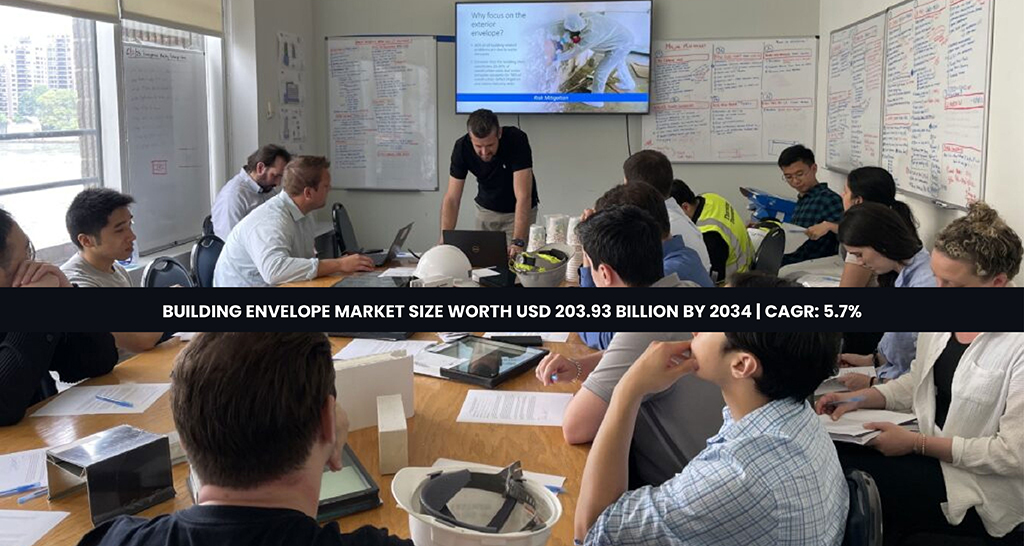The building envelope is a primary component of modern architecture, from a design standpoint, and is defined as the physical separation between the interior and exterior of a building. The building envelope includes walls, roofs, doors, windows, encasings and insulation systems. Collectively, the building envelope plays an important role in a range of properties, from energy performance and durability to comfort. With the increasing global focus on sustainable development and green building initiatives, there is an increased demand to provide advanced building envelope solutions that contribute to insulation, moisture control, structural integrity, and sound resistance.
Key Components of Building Envelopes
Walls and Facades
Walls and facades are the most significant p006Frtion of the structure’s outer layer. They are the first foray into protecting against external environmental stressors such as rain, wind, temperature, and UV radiation. When protecting the building, they also create the aesthetic character and the energy performance of the buildings they are stabilizing. New technology has emerged in the form of curtain walls, ventilated facades, and composite cladding systems, offering improved thermal performance, reduction of air infiltration, and improved sound insulation. The use of improved construction materials, such as fiber reinforced concrete, aluminum composites, and more sustainable claddings, offers increased strength and aesthetic versatility.
Roofs
Roofs are integral to temperature control stability in the building, and they also protect against water infiltration. The most advanced roofing systems include multi-layer insulation, reflective coatings, and membranes to optimize solar reflectance and minimize heat absorption. Extensive green roofs, which are roofs with layers of growing vegetation, clean the air and insulate in a natural fashion, while also sometimes providing for solar-intergrated roofs which can facilitate renewable energy. These systems improve building energy performance while enhancing or supporting urban sustainability by minimizing the heat island effect.
Windows and Doors
Windows and doors provide views, daylight, and ventilation; they can also be avenues for energy loss. The introduction of new components and technology, with examples such as Low-E, argon gas fill in glass units, and thermally broken frames, reduces heat transfer while still allowing visibility. Automatic shading solutions, and smart glass which tints when sunlight is at its most intense, is becoming commonplace. Energy-efficient door systems provide greater energy retention and improved comfort levels in a building.
Insulation and Sealants
A high-performance building envelope requires insulation and sealants to be effective. Insulation products made of mineral wool, expanded polystyrene (EPS), or polyurethane have higher than average thermal resistance performance. Sealants, as well as vapor barriers and weatherproof membranes, provide protection against air and moisture from entering the building envelope and, as added protection, against mold, corrosion, or structural damage. All products need to work together throughout the entire building envelope to provide the correct energy efficiency, durability, and comfort level based on the location’s climate.
Key Market Stats
The building envelope market stood at USD 117.57 billion in 2024, according to the latest assessment by Polaris Market Research. The market is projected to account for a CAGR of 5.7% between 2025 and 2034.
Building Envelope Market Drivers
Growing Focus on Energy-Efficient Buildings
The worldwide shift toward sustainable construction is being heavily driven by the necessity to curtail energy consumption and operational expenses within structures. Since heating, cooling, and lighting account for a large percentage of overall building energy use, energy-efficient envelopes have become the leading focus in the architectural and construction fields. Utilizing improved insulation, performance facades, and airtight systems can significantly minimize energy waste and carbon footprint. Both governments and private developers are increasingly investing in net-zero energy buildings and pursuing certifications like LEED, BREEAM, and WELL, where energy-efficient envelopes are among the compliance requirements.
View More Information @ https://www.polarismarketresearch.com/industry-analysis/building-envelope-market/request-for-sample
Rising Urbanization and Infrastructure Development
The rapidly changing pace of urbanization, particularly in developing economies in regions spanning across Asia Pacific, and the Middle East, and Africa, are drawing enormous demand for durable and sustainable building solutions. As populations increase and standards of living improve, commercial property complexes, smart cities, and residential property developments continue to expand quickly and is demanding increasing levels of building development. To ensure these properties last years without major issues or maintenance expenses, builders are now using advanced envelope materials more frequently than ever. As these urban efforts continue and based globally beneficial trends that result in mixed-use building envelope property developments, the building envelope market will continue to grow.
Conclusion
The building envelope market is advancing at an incredible pace driven by sustainability imperatives, technological advancements, and regulatory frameworks that enable energy efficiency. As urban sprawl continues and climate challenges escalate, advancements in materials, designs, and digital integration are transforming the next generation of performance envelopes. These developments will redefine the aesthetics and resilience of modern buildings and create the basis for a more sustainable built environment.
Read More @ www.polarismarketresearch.com







